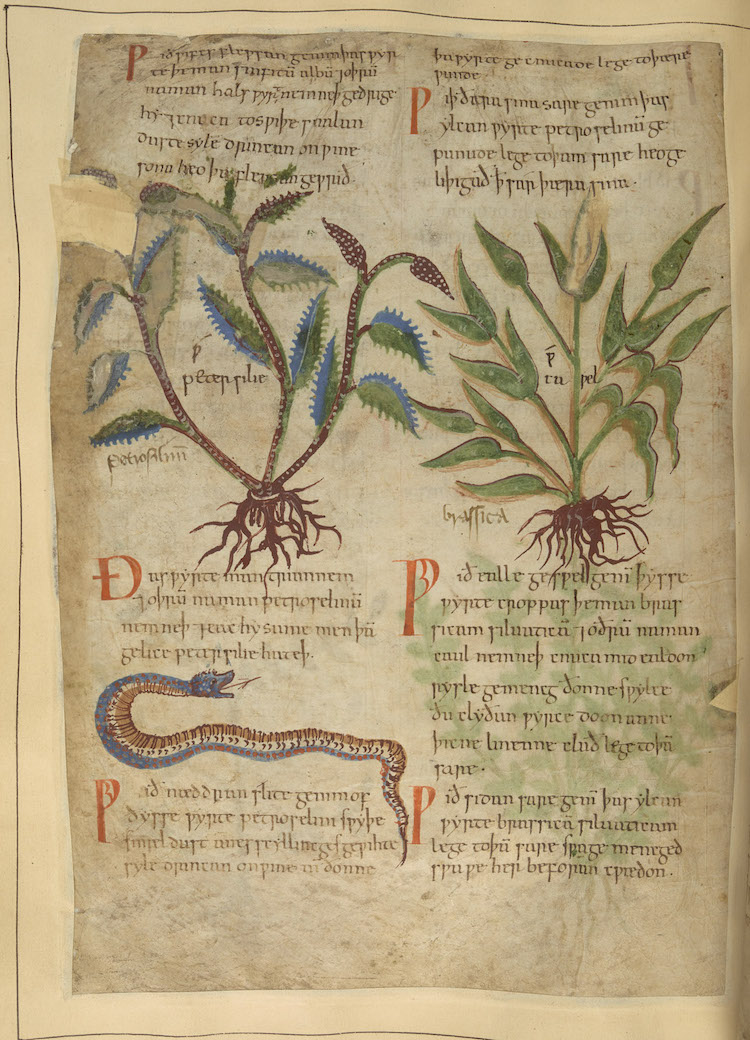
The invention of the moveable type printing press by Gutenberg in 1455 CE made books increasingly accessible. Of course, those books were only available to those who were literate. Nevertheless, the moveable press changed the way we communicated. The press revolutionized the production of manuscripts and even in its earliest days the quality of print was extraordinary. Though usually printed in paper, the books were still of the highest quality. Most famously, the first of the “mass” produced books was the Latin text of the Christian Bible which even contained illustrations.
But these illustrations were incomplete. They relied on the talent that was refined and inherited over the previous centuries where skilled artisans added colors to the pages of manuscripts by hand. This process was called illumination, and it was generally reserved for those documents that Medieval scholars and religious figures deemed the most important. The illuminated books were created with vellum, the highest quality parchment available.
Well before the printing press offered templates for coloring, artisans, who were typically in religious vocations, created colorful decorations for handwritten books in a scriptorium, an area of a monastery designated for the production of texts. The artwork included main images on pages but also initials, miniature illustrations within the page and the graphic elaborations on borders called marginalia. Illuminated manuscripts became common in both the Western tradition of book creation as well as in Islamic manuscripts.
But after the 12th Century CE, as universities gained prominence and more individuals moved to cities, laymen were involved in the transcription and illumination of manuscripts. They were often patronized by nobility to produce texts for private libraries. Soon the roles expanded and guilds formed for those who made the parchment, those who wrote (scribes), those who illuminated and those who bound the texts.
Still, the construction of manuscripts was both an extensive process and an expensive one. The most skilled craftsmen could produced texts that were translucent, intricately rendered images with complex works of art. Some of the rare manuscripts included metalwork, enamel, and even precious stones.

“Old English Illustrated Herbal” 11th century. Credit: British Library
Sadly, these manuscripts are also fragile. Pigments will fade. The parchment itself is prone to fusing and breakage depending on the environmental conditions. Some illustrated manuscripts have even been lost to burning and other accidents. So, the books that survive intact are dearly prized; and those with damage are given expert restoration.
Preservation and archiving of manuscripts however keep them shuttered. Though cared for, they are still at risk of potential loss. But more importantly, their presence in the archives keeps them from being explored and understood.
So, many of these manuscripts are being digitized and made available to the public. After years of work, the British Library, Bibliothèque Nationale de France, and the Polonsky Foundation, announced that 800 Medieval manuscripts created between 700 CE and 1200 CE were available to the public over the internet. The manuscripts can be accessed via the British Library in English, and the Bibliothèque Nationale de France in English and French. The manuscript topics range from Medieval religious and philosophical thought to coverage of historical events to treatises on the Classics.

Diagram of the zodiac in “Miscellany of works on computus and astronomy” by Bede. Credit: British Library
But wait, there’s more. The British Library also offers information on medieval herbalism and medical knowledge with access to some additional, though more limited resources. One of these is a translation of Dioscorides, Liber de virtutibus herbarium, the Herbarium of Dioscorides and one of only three surviving complete translations. They also offer links of the Old English Herbal, with beautiful illustrations of flora and fauna. They even have astronomical texts that appear to have been part of medieval curriculum to explain the phases of the moon, the Zodiac and the occurrence of eclipses, both lunar and solar.
All of the 800 manuscripts can be explored. The libraries provide a full list of the manuscripts and what is currently available in an Excel spread sheet that contains the physical location of the manuscript, its title, and the link to the digital copy.
All online, waiting for readers.
The Wild Hunt is not responsible for links to external content.
To join a conversation on this post:
Visit our The Wild Hunt subreddit! Point your favorite browser to https://www.reddit.com/r/The_Wild_Hunt_News/, then click “JOIN”. Make sure to click the bell, too, to be notified of new articles posted to our subreddit.
